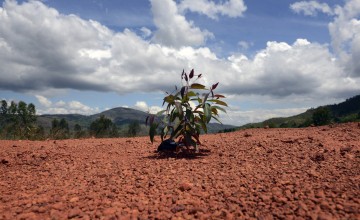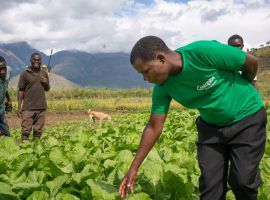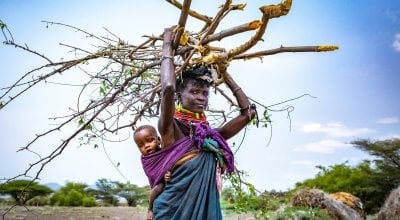
Knowledge Hub
Our take on the UN Climate Action Summit

At the start of a major week in global diplomacy, Monday saw world leaders gathered in New York to discuss climate change. In fact, explicitly not just to discuss climate change; they were invited by the UN Secretary General to say exactly what they plan to do about it.
And there were a lot of announcements: 77 countries committed to cut greenhouse gas emissions to net zero by 2050, 70 countries announced they will be boosting their national action plans by 2020, investors worth USD2 trillion said they would make their portfolios carbon-neutral by 2050, and cities put forward over 1000 projects to make themselves climate-smart.
Steps in the right direction. But there’s still a long way to go. What came through clearest was the leadership of those countries worst affected by, and least responsible for, climate change: 47 of the countries that committed to net zero emissions were Least Developed Countries.
Delivering for the most vulnerable people?
For humanitarian and development organisations like Concern Worldwide, what the Summit did or did not deliver for the world’s poorest and most vulnerable people is central to whether we can call it a success.
The Summit intended to help put climate change adaptation – the changes we need to make to reduce our vulnerability to climate impacts – higher up the political agenda. We did see some much needed initiatives launched, which aim to help the most vulnerable people cope today whilst also putting climate risk at the heart of how we invest and plan to make sure we’re building resilience for the future.
One very welcome initiative was a new partnership to bring together key actors that aims to help communities take early action to prevent disaster. The benefits of acting early in the face of predicted hazards is well-known (see our paper on this here) – this initiative should be a welcome injection of political energy and money.

Turning commitments into reality
As always though, the devil is in the detail. How these announcements are implemented will be key to how successful they are at building the resilience of the people worst affected by – and least responsible for – climate change.
At a minimum, implementation needs to ensure that the most vulnerable people are involved in the decisions about their lives. This may sound obvious; we know that when we’re not consulted on even small decisions, the outcome may not be what we want it to be. Often though, the international system operates in a way that excludes the most marginalised people from the processes that are intended to reduce their vulnerability.
As a priority, there needs to be proper engagement with communities and civil society as the initiatives are taken forward. In particular, indigenous peoples, women’s networks and smallholder farmer groups should be leading the process.
How to cover the costs of adaptation?
Developed countries used the Summit to make financial commitments to the international Green Climate Fund and the UK committed to double its climate finance overall.
The UK’s commitment on climate finance is a good example of the challenge with existing climate finance pledges: although the UK committed to double its climate finance overall, all of this will come from the existing international aid budget. It isn’t ‘new’ money.
This is an issue because many developing countries, even with international aid, cannot afford to cover the costs of the basic health, nutrition, education and social protection needed to end extreme poverty. Climate change will make it more expensive for countries to develop, adding further to the costs that developing countries need to cover from limited budgets.
When adaptation costs in developing countries are projected to rise to up to US$300 billion a year by 2030, continuing to source climate finance only from existing international aid cannot be sustainable. We need to get more inventive in tapping into new sources of public finance for climate change adaptation (these could be linked to solutions being put forward to reduce our greenhouse gas emissions).
What now?
The Climate Action Summit didn’t give us all the solutions we need. But no one Summit is going to be able to do that; momentum needs to be continued. There are signs this might be possible. The run-up to the Summit saw unprecedented public mobilisation. The majority of the British public are now very concerned about climate change. It isn’t just the “eyes of all future generations” that are upon world leaders, but those of current (and voting) generations too.
Time is getting tighter. When governments reconvene at the international climate talks in Chile later this year and in Glasgow in December 2020, they’ll need to demonstrate that they understand the urgency.





